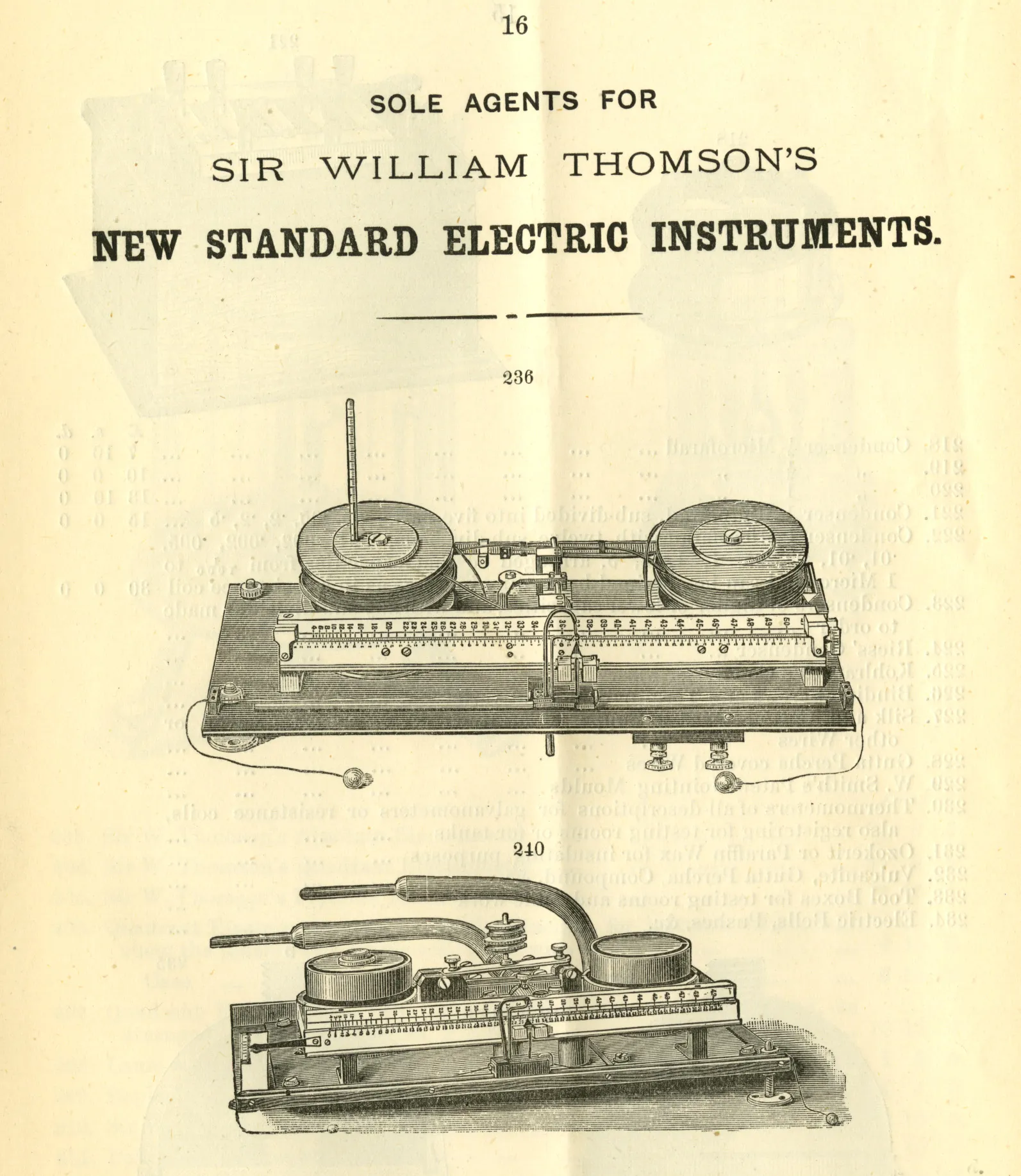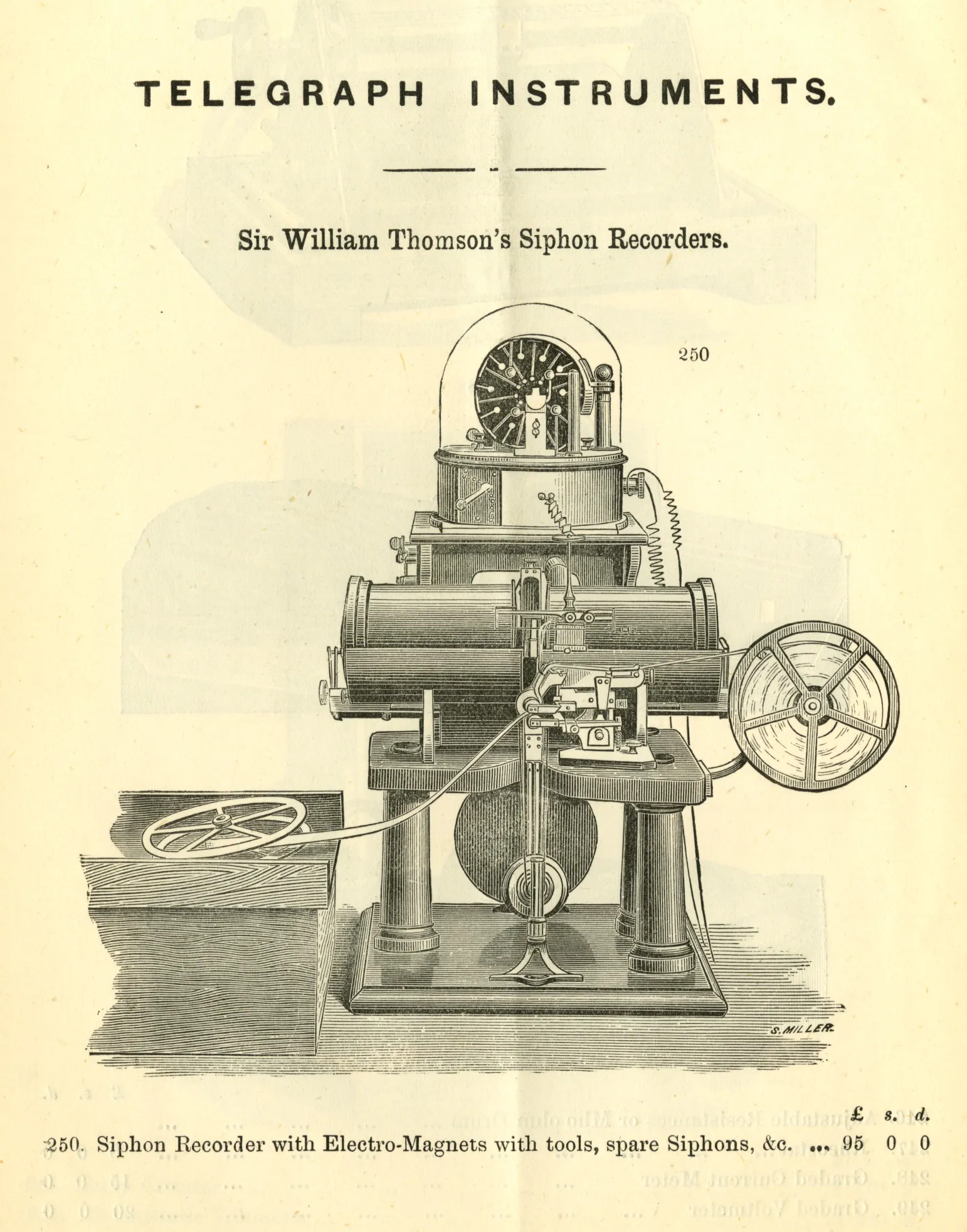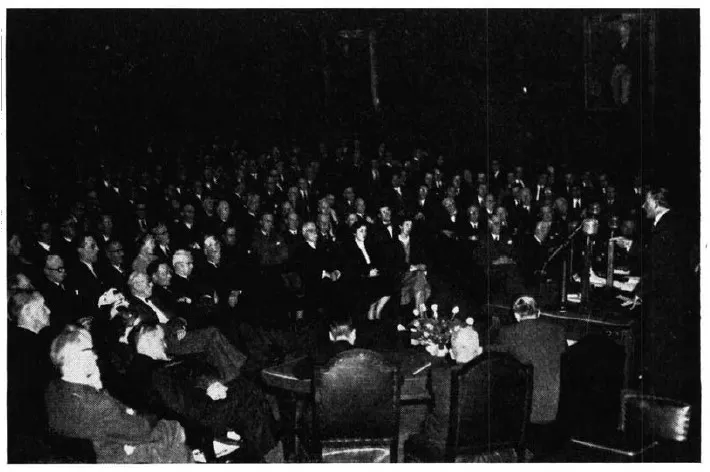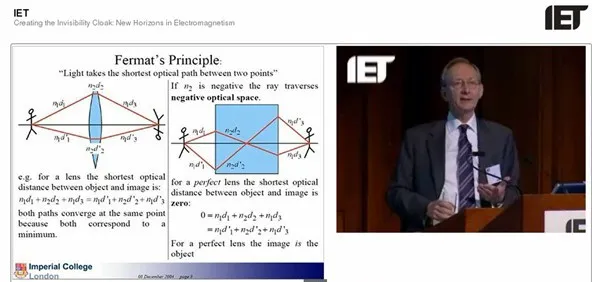William Thomson, Baron Kelvin of Largs (1824-1907), Honorary Member and former President of the IEE three times (1874, 1889, 1907), was a British mathematical physicist and engineer. During his lifetime Thomson made an enormous contribution to the study and understanding of thermodynamics, electrodynamics, hydrodynamics and geophysics.
In February 1908, shortly after Kelvin’s death, the IEE Memorial Committee recommended ‘the establishment of Kelvin Lectureship’ to be delivered annually and supported the funding for the IEE to acquire its own building, Savoy Place.
The eponymous lecture series was founded in 1908 with the first lecture given by IEE Past President Silvanus P Thompson on 30 April 1908, on ‘The Life and Work of Lord Kelvin’.

Sir William Thomson's Centi Ampere And Hecto Ampere Balance ref. SPT164/8

Portrait of Sir William Thompson Lord Kelvin By E Goodwyn Lewis Close showing Kelvin with his apparatus, ref. OPC 02 041

Sir William Thomson's Telegraph Instrument: Siphon Recorder with Electro-magnets ref. SPT164/8
Subsequent Kelvin Lectures have included some of the most distinguished British scientists. Electricity and Matter was discussed by Sir Ernest Rutherford in 1922; Electric Forces and Quanta by Professor J H Jeans in 1925; The Mechanics of the Electric Field by Sir J J Thomson in 1926 and The Architecture of the Solid State by Professor W L Bragg in 1931. From the 1920s onwards the subjects were more wide-ranging than aspects of Kelvin’s work but continued to reflect Kelvin’s influence.
Some of the most eminent scientists have addressed the Institution’s members, here is a summary:
|
1913-1914 |
Sir Oliver Lodge: The electrification of the atmosphere: natural and artificial |
|
1920-1921 |
Sir William H Bragg: Electrons |
|
1921-1922 |
Sir Ernest Rutherford: Electricity and matter |
|
1922-1923 |
Dr J A Fleming FRS: Problems in telephony solved and unsolved |
|
1925-1926 |
Sir J J Thomson: The mechanics of the electric field |
|
1930-1931 |
Sir William H Bragg 'The architecture of the solid-state' [inc crystallography] |
|
1944-1945 |
Sir Edward V Appleton: The scientific principles of radiolocation |
|
1945-1946 |
Professor M L Oliphant FRS: Nuclear physics and the future |
|
1955-1956 |
Professor A C B Lovell OBE FRS: Radio astronomy |
|
1975 |
Sir Charles Oatley: The scanning electron microscope and other electron probe instruments |
|
1995 |
Professor M W J Ferguson: The elephant’s trunk and the tattooed lady: engineering problems and opportunities in biology |
|
2001 |
Professor Sir Chris Llewellyn-Smith: The large hadron collider project |
|
2009 |
Professor Sir John Pendry: Creating the invisibility cloak: New horizons in electromagnetism |
|
2013 |
Professor Jim Al-Khalili: Is life quantum mechanical |
|
2017 |
Dr Jack Kreindler and Professor Eleanor Stride: Why haven’t we cured cancer yet- IET EngTalk |
|
2019 |
Raj Samani and Dr Maria Bada: Rihanna changed my life: Inspiring a new generation of cyber security professionals – IET EngTalk |
|
|
A full list of lectures is available in the IET Archives |

Professor A C B Lovell delivering his Kelvin Lecture on Radio Astronomy in the IEE Lecture Theatre 26 April 1956.
In 1956 Professor A C B Lovell from the University of Manchester gave his Kelvin Lecture on ‘Radio Astronomy’.
According to the report in the JIEE 1956 it included, “some fascinating cosmological speculation, interesting lantern slides – both astronomical and terrestrial- and a demonstration of noise received from a distant star.”
The 77th Lecture delivered by Professor Igor Aleksander in 1986 ‘Reinventing information: the struggle for an artificial intelligence’ sought to illustrate the ways in which various features of human intelligence have been captured in information systems, hoping to shed light on what the term ‘intelligence’ means. It was presented jointly to the IEE US West Coast Branch and IEEE local groups in Los Angeles and Cupertino in California and was the best attended lecture of that year
The 86th lecture, held in 1995, entitled The Elephant’s Trunk and the Tattooed Lady: Engineering Problems and Opportunities in Biology, was delivered by Professor M W J Ferguson of the University of Manchester. It drew on several examples, such as cleft lips and the fact that embryonic wounds heal without scarring, to illustrate the interaction between biological sciences and engineering and to challenge engineers to develop systems to address pressing biological problems such as facial defects. The Institution congratulated Professor Ferguson his fascinating and well-presented lecture.
In 2009 the centenary Kelvin Lecture was held at Savoy Place, London, and the University of Glasgow on 12 and 17 March respectively.
Delivered by Professor Sir John Pendry of Imperial College, London, the lecture, entitled Creating the invisibility cloak: New horizons in electromagnetism, explored the future uses of electromagnetism.
Watch the 2009 Kelvin Centenary Lecture on IET.tv

Film still from the 2009 Kelvin Lecture presented by Professor Sir John Pendry.
The Kelvin Lecture remains one of the IET’s Prestige Lectures and is now part of the EngTalks series. Some of these lectures have been filmed and are available to watch via the IET’s dedicated television channel, IET.tv. During the 2020-2021 covid pandemic they were filmed without a live audience but pre-recorded with a live question and answer session afterwards.
